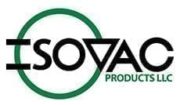By Lieutenant Edwaldo
Brasília, 03/28/2020 – In Operation COVID-19, the existing expertise with the specialized troops in Biological, Nuclear, Chemical and Radiological Defense (DBNQR), of the Navy, Army and Aeronautics have enabled the monitoring, identification, marking area and the decontamination of personnel, material and vehicles.
Any chemical agent (manufactured, used, transported or stored) that can cause death or damage through its toxic property is considered a chemical hazard. The radiological hazard is any radioactive particle or electromagnetic wave that produces ions that cause damage, injury or destruction. Nuclear Hazard is the set of harmful effects on the health of people and animals, installations and electronic equipment, which result from the detonation of a nuclear weapon, which can cause immediate or prolonged damage, according to the nature and characteristics of nuclear detonation.
Personal Protective Equipment (PPE) consists of a gas mask, Protective Permeable Combat Clothing (RPPC), boots and protective gloves. The level of protection to be used will be decided according to the contamination characteristics. The placement and removal procedures must be standardized so that contamination of the operational elements does not occur at this stage.
Level C protection (in white or yellow) is being used to combat the coronavirus, which is recommended for biological threats.
Decontamination
The type of BNQR hazard and the situation are the factors that indicate which decontamination method is most appropriate. There is the decontamination of personnel, which aims at actions to save lives, reduce casualties and limit the spread of contagion; and physical decontamination, which includes equipment, objects, vehicles, facilities and areas, allowing for the reuse of infrastructure. There is also technical decontamination, which aims to decontaminate the teams of DBNQR military organizations and other specialists.
In Operation COVID-19, BX 24 products are being used – for decontamination / detoxification for vehicles and different types of CBRN agent materials and BX 29 – a decontaminating product for people.
The Ministry of Defense has already employed military personnel specialized in BNQR defense at the Military World Games, World Youth Day, Confederations Cup, World Cup, Olympic and Paralympic Games 2016, Operation Return to the Homeland of Brazil and various support for Civil Defense.
The Military Organizations that can act in the field of biological defense with the different Joint Commands activated in Operation Covid-19 are the Commands of the Naval Districts, the Command of the Squadron Marine Force, the NBQR Defense Company of the Marine Engineering Battalion , the Nuclear, Biological, Chemical and Radiological Defense Center of the Brazilian Navy, the Nuclear, Biological, Chemical and Radiological Defense Battalion of Aramar-SP, of the Brazilian Navy, the Chemical, Radiological, Biological and Nuclear Defense Company, from the Special Operations Command, from the Army, the 1st Battalion of Chemical, Biological, Radiological and Nuclear Defense, from the Army, the Institute of Chemical, Biological, Radiological and Nuclear Defense from the Army and the Institute of Biology from the Brazilian Army. The Brazilian Air Force relies on the Brigadeiro Medico Roberto Teixeira Institute of Aerospace Medicine – IMAE and the specialized means of Aeromedical Evacuation such as that of the 3rd Squadron of the 8th Aviation Group (Squadron Puma).
During Operation COVID-19, specialized military personnel are also taking a course in Biological, Nuclear, Chemical and Radiological Defense to train Armed Forces soldiers, firefighters and Civil Defense agents.
Stock balance
To date, approximately 323 vehicles, 52 vessels and approximately six thousand military personnel from the Navy, Army and Air Force are working to raise awareness among the population, support government and border agencies, clean up and decontaminate public places. , screening stations, vaccination campaigns, setting up of service tents, among others.
SOURCE and PHOTOS: MD
